With the George Washington University 2015 Commencement days away, more than 25,000 people are expected to descend on the National Mall. For graduating students that means packing up, cramming in last minute coffee dates with friends and showing family members the best of D.C. and GW—all before turning their tassels.
Playing the expert tour guide for family and friends can be difficult, so GW Today compiled a list of interesting landmarks and little known gems on the GW Foggy Bottom Campus. Pair these tips with the virtual tour for an insider’s view of GW that will impress even the most fickle out-of-town guests.
1. Art Walk
Various locations on Foggy Bottom Campus
It’s a no-brainer for a tour of GW to include the newly opened 53,000-square-foot the George Washington University Museum and The Textile Museum. More than 2,000 people visited the museum during its opening weekend in March to explore the history of the more than 10,000 objects on display from the Albert H. Small Washingtoniana collection and The Textile Museum.
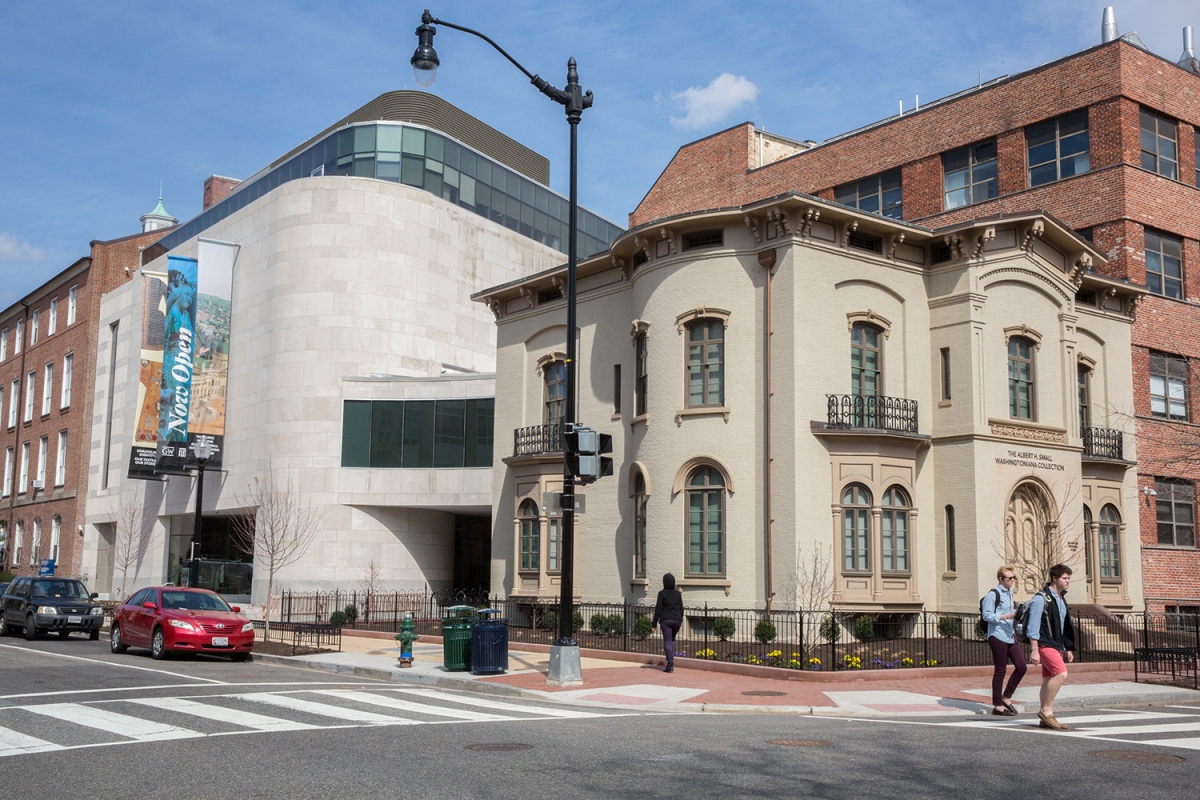
The George Washington University Museum and The Textile Museum
Following a walk through the museum, discover the artwork in plain view on the Foggy Bottom Campus. There are several outdoor sculptures on the grounds including Arthur Carter’s “Suffusion,” a steel and bronze work on the Mid-Campus Quad, and “Joyce,” a multicolored aluminum sculpture outside of the south side of Lisner Auditorium created by artist Sam Maitin.

"Suffusion," located on the Mid-Campus Quad.
For more insight into campus artwork, visit the installation in the Great Hall of the Marvin Center created by museum studies graduate students.
2. GW’s Hidden History
Various locations on Foggy Bottom Campus
The Foggy Bottom Campus has played backdrop to more than 100 years of university and D.C. history and small markers throughout campus pay homage to that legacy. At the Lisner Auditorium, the sculpted face of famed actress Ingrid Bergman peers out from an emergency call box as a reminder of the venue’s segregated past. Ms. Bergman voiced disappointment to newspapers after learning that Lisner Auditorium was segregated while starring in a 1946 production of “Joan of Lorraine” at the venue. The cast and crew of the production signed a petition protesting GW’s policy of segregation. After a year of debate, Lisner Auditorium began to allow black patrons to attend performances.
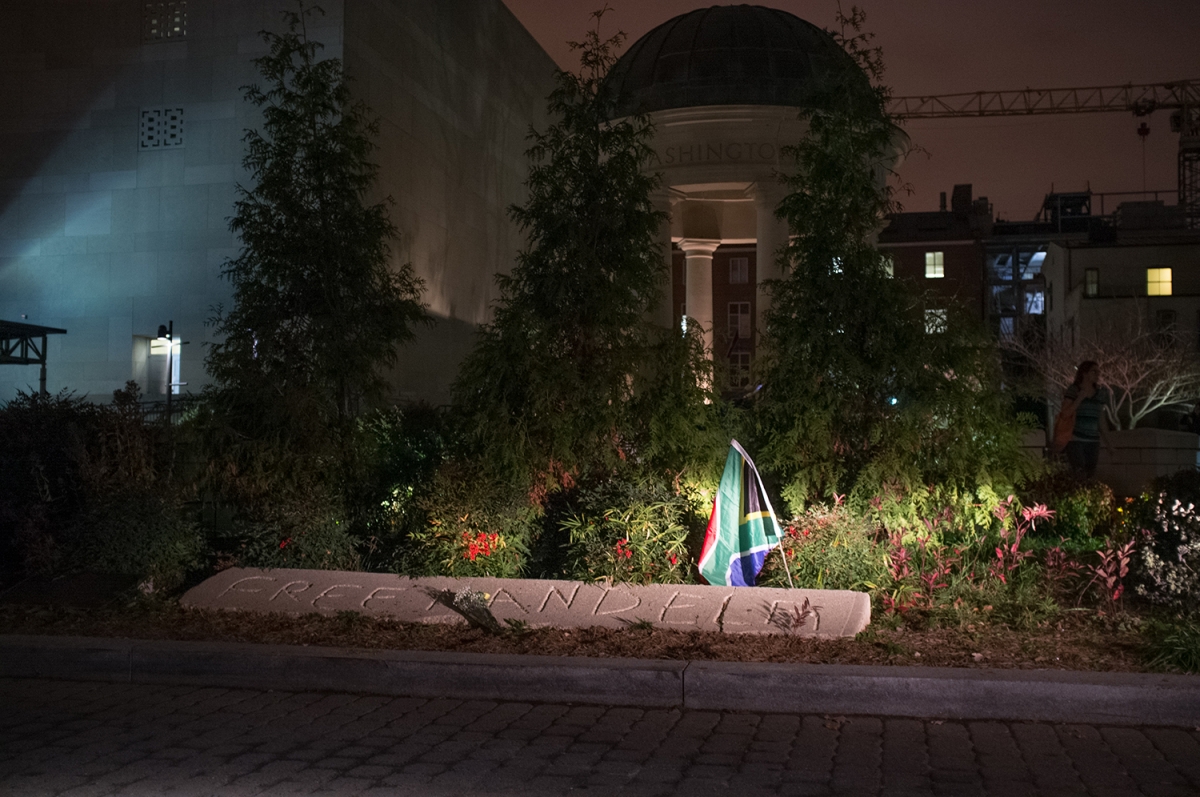
Photo of the "Free Mandela" stone slab taken Dec. 5, 2013, the night that Nelson Mandela died.
Other notable historical campus landmarks include the first U.S. memorial honoring Russian poet and author Alexander Pushkin located at 22nd and H streets; the stone slab in Kogan Plaza inscribed with the words “Free Mandela” in 1985 by students protesting South Africa apartheid; and the bench outside of Lisner Auditorium honoring author Toni Morrison that was installed in 2011.

Author Toni Morrison on stage at the Lisner Auditorium sitting on the bench dedicated in her honor for the "Bench by the Road" project.
3. Spot George!
Various locations on the Foggy Bottom Campus
Artistic renderings of the university’s namesake can be seen throughout campus, including the formidable bronze statue located near the rose garden by the north entrance of University Yard. The replica is modeled after the 18th-century original, which was carved in marble by famed French artist Jean-Antoine Houdon. Mr. Houdon’s original sculpture sits in the rotunda of the capitol building in Richmond, Va.
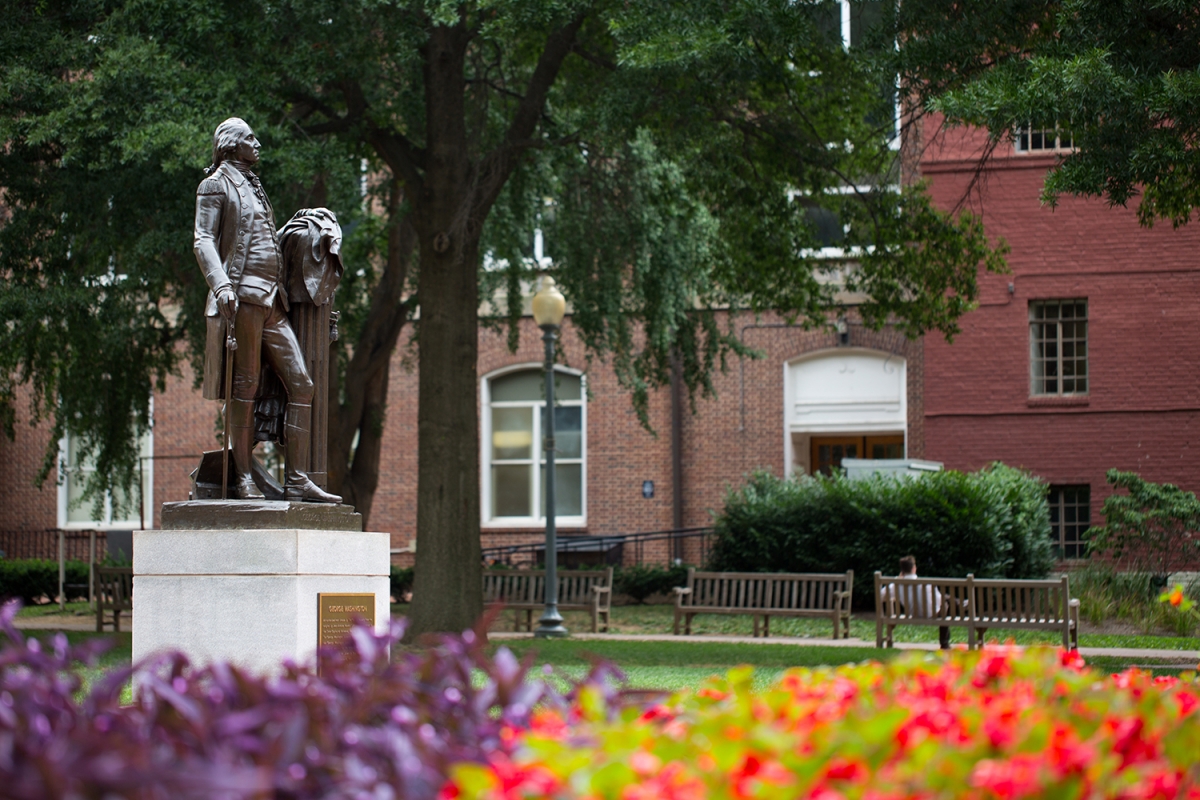
The replica of Jean-Antoine Houdon's 18-century sculpture of George Washington.
As you walk through campus, try to spot the other busts of George Washington at four street intersections on campus.
4. Campus Eats
Tonic Restaurant, 619 21st St., NW; GW Delicatessen 2133 G St., NW
Tonic Restaurant at Quigley’s Pharmacy serves a menu of American-style comfort foods to hungry students, faculty and staff members. The Foggy Bottom Campus staple is located in the historic building that housed Quigley’s Pharmacy, which was opened in 1891 by GW Class of 1890 alumnus Richard Lucien Quigley. The pharmacy later became the site of the GW Department of Geography before the grand opening of Tonic Restaurant in 2006.
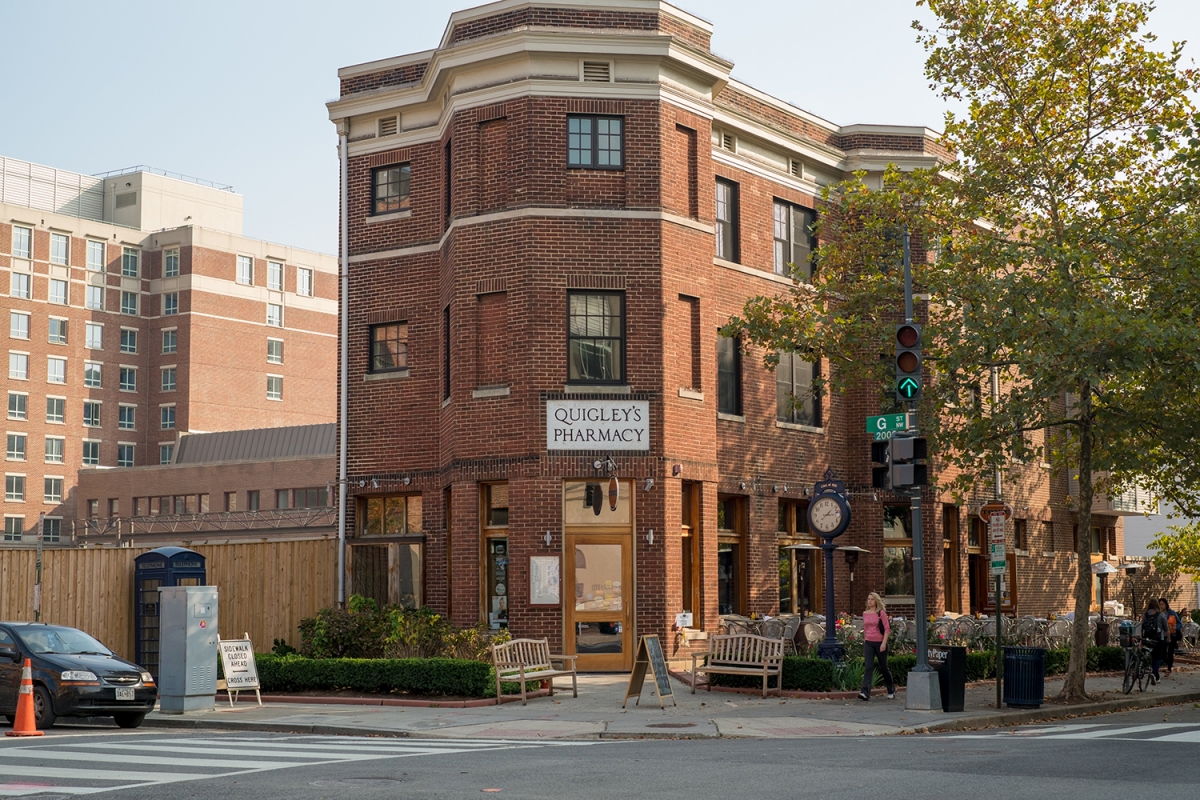
Tator tots, nachos and combo"tachos" are favorites on the Tonic Restuaurant menu.
GW Delicatessen, fondly known as GW Deli, is another historic choice for a midday meal. Founded in 1945 by Leo Ambrogi, the GW Deli serves traditional deli fare, including sandwiches with teetering piles of fresh cold cuts and customizable breakfast sandwiches on bagels—a campus favorite. Mr. Ambrogi died in 2004, but the eatery remains a staple for GW students.
5. An Old Favorite
City View Room, 1957 E St., NW
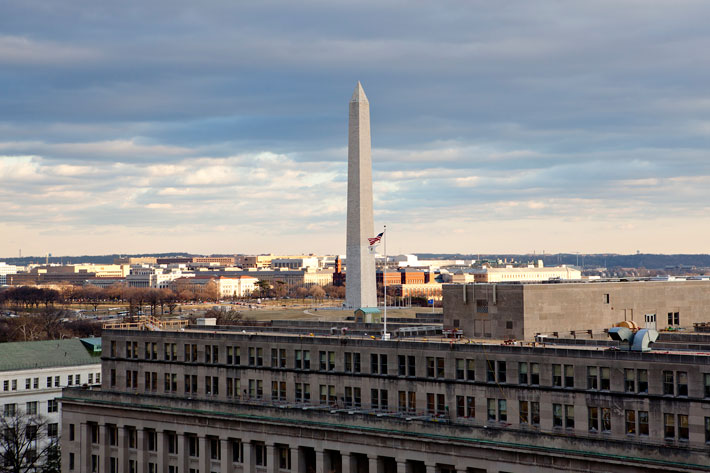
The view from the City View Room on the seventh floor of the Elliott School of International Affairs.
Take your last look at GW from the best view on campus: the City View Room. Located on the seventh floor of the Elliott School of International Affairs, the venue houses many GW community celebrations and events such as the Jewish Literature Live reading with author Daniel Handler and the GW Students for Recovery “Raise High for Recovery” gala. The sky-high view displays GW’s place at the heart of the nation’s capital, with a clear view of the monuments and the Capitol Building.


